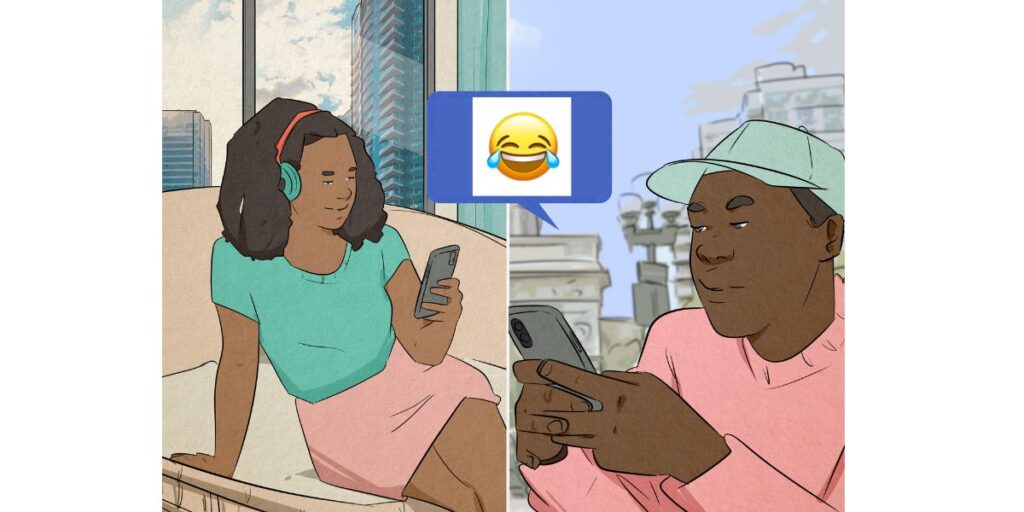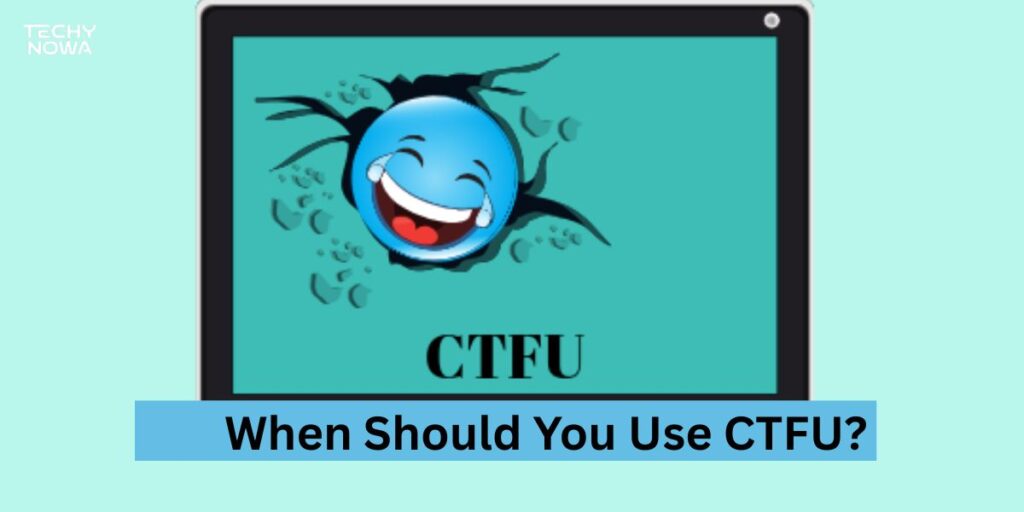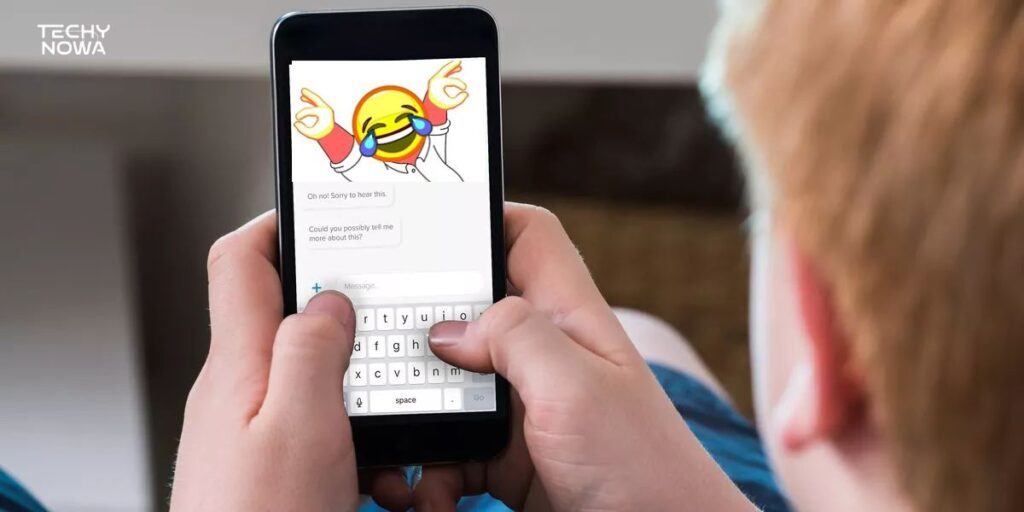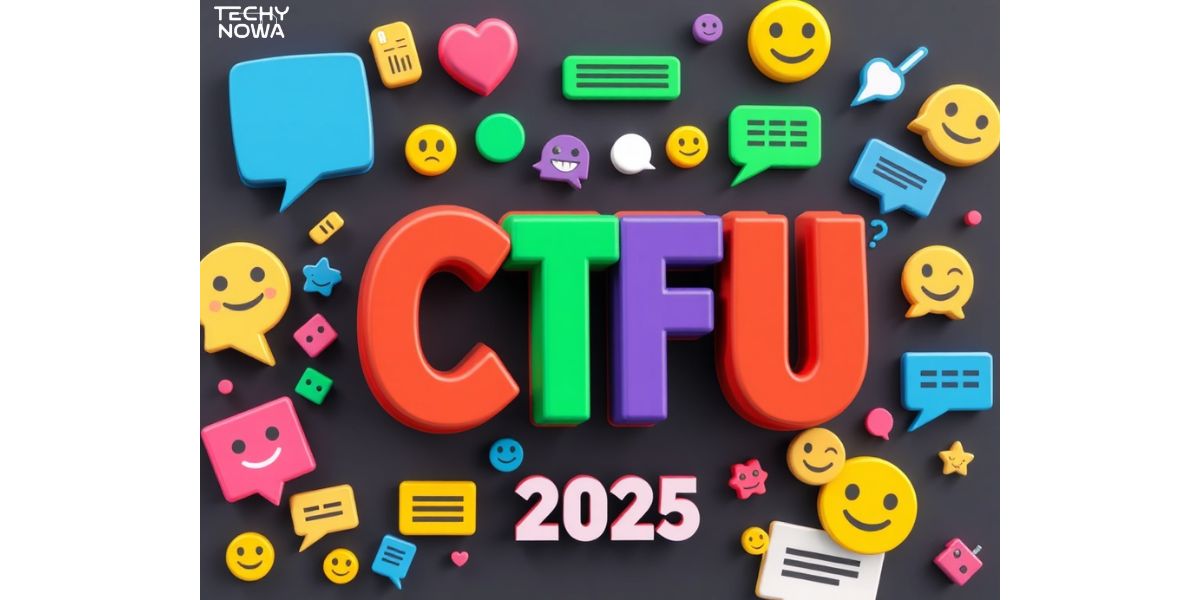CTFU Meaning in text stands for Cracking The F* Up. It is a slang term used to show extreme laughter online. People mostly use it in casual chats, memes, and social media. The phrase is strong and can sound offensive in formal settings. Knowing when and how to use it helps avoid misunderstandings. This guide explains its meaning, origin, usage and safe alternatives in 2025.
What Does CTFU Mean in Text?
It means Cracking The F Up. It shows extreme laughter in digital chats. The phrase is stronger than LOL or LMAO. It is mostly used in casual conversations online. Friends often use it to react to funny jokes. The word carries an informal and sometimes rude tone. It should be avoided in professional settings.
CTFU is part of modern internet slang. It reflects how people express emotions quickly online. The acronym became popular in memes and texting. It shows how digital culture changes communication style. Using it wrongly may confuse or offend others. Understanding its meaning prevents miscommunication in chats. This makes you sound updated and socially aware.
Related guide: DTM Meaning In Text: What It Really Stands For And When To Use It 2025
Is CTFU Appropriate to Use in All Contexts?
It is not appropriate in all contexts. It includes profanity that may offend some people. It is fine with close friends in casual chats. It should be avoided in school, work or formal talks.
✅ Appropriate in
CTFU is fine in casual conversations with friends. It works well in group chats with close people. It fits when reacting to funny memes or jokes. It is common in social media comments and posts. You can use it in gaming chats for humor. Example: “That video was so funny, I’m CTFU!”In these cases, it feels natural and fun.
❌ Avoid in:
CTFU should not be used in professional emails. It is risky in school or academic discussions. It can sound rude in family or formal settings. It is not good in customer or workplace chats. Avoid it when talking with people you don’t know. Example: “Dear Manager, I’m CTFU at your idea” feels wrong. In these cases, it looks unprofessional and disrespectful.
Related guide: What Does RS Mean In Text? Complete Guide With Polite Alternatives 2025
Why Do People Use CTFU Instead of LOL or LMAO?
People use CTFU to show stronger laughter. It feels more intense than LOL or LMAO. It expresses real amusement in a casual way. CTFU often adds humor with a bold tone. It works well when something feels extremely funny. Friends like it because it sounds dramatic and fun. It makes reactions stand out in conversations.

LOL now feels weak in online chats. LMAO is common but less powerful than CTFU. CTFU shows emotion with extra energy and impact. It helps users look trendy with slang updates. People enjoy short forms that carry strong feelings. CTFU spreads quickly in memes and social media. That is why many prefer it over older terms.
Cultural Roots of CTFU
| Aspect | Explanation | Example |
| Origin | Linked to African-American Vernacular English (AAVE). | Used in early internet chats. |
| Expression | Shows strong laughter in casual speech. | That joke got me CTFU! |
| Spread | Grew popular through memes and social media. | Twitter and Facebook posts. |
| Tone | Informal and playful, sometimes bold. | Friends joking in group chat. |
| Impact | Reflects cultural influence on internet slang. | AAVE terms shaping global online language. |
15 Alternatives to CTFU Based on Tone and Context
There are many alternatives to CTFU you can use. LOL and Haha work best in light, casual chats. LMAO, ROFL and I’m dead show stronger laughter. For polite settings, use That is funny or So hilarious.
Related guide: TM In Text Messages: Meaning, Usage, And Best Alternatives 2025
Polite Alternatives to CTFU
Polite alternatives avoid strong or rude words. You can use LOL to keep it light. Haha is soft and friendly for most chats. Too funny works well in polite settings. These phrases show laughter without offending anyone. They are safe for family and mixed groups. Polite words help maintain respect in conversations.
Professional or Work-Safe Alternatives to CTFU
Work chats need clean and respectful language. LOL is common and simple for office use. That’s hilarious and sounds natural in emails or messages. Making me laugh keeps the tone polite and clear. Too good works well in professional teamwork. These phrases show humor but remain workplace safe. They keep communication professional and friendly.
Casual & Friendly Alternatives to CTFU
Casual chats allow more playful expressions. LMAO shows big laughter with close friends.
ROFL works for joking moments in texts. I’m dying is fun and common among youth. Dead 😂 is popular on social media posts. These phrases bring humor to light talks. They fit relaxed and friendly conversations.
When Should You Use CTFU?
You should use CTFU in light and funny conversations. It works best with close friends or people who understand slang. It is common in group chats filled with jokes and memes. Use it when laughter is real and strong. It can add fun and emotion to online talk. Always think about who is reading your message. Use it only when the audience will not feel offended.

CTFU fits well in casual spaces like Twitter, TikTok or texting. It shows you found something extremely hilarious. You can use it to react fast in chats. It makes your tone playful and more expressive. Do not use it in school or work settings. Professional people may not find it appropriate. Keep it for informal and personal conversations only.
Can You Use CTFU in Social Media Captions?
You can use CTFU in social media captions. It makes posts look casual and funny. Friends may find it relatable and real. It shows your mood in a playful way. But not all followers like strong slang. Some may think it looks rude. So use it wisely in public posts.
CTFU works best with memes and jokes. It adds extra laughter to your content. You can pair it with emojis for effect. Brands or professionals should avoid it. It may harm your image with some audiences. Safer words like LOL or LMAO work better. Always match your slang to your readers.
Tone Matters: The Nuance of Using Humor in Text
Tone matters in every text you send. Humor can sound playful in one chat. The same joke can feel rude in another. Words without a voice often lose their meaning. That is why emojis and context help a lot. They guide the reader to understand the mood. Without them, humor may create confusion or hurt.
Nuance makes humor tricky in digital spaces. Friends may laugh at slang or inside jokes. Co-workers might see the same words as unprofessional. CTFU feels light among close peers. It can feel harsh in serious conversations. Understanding your audience always protects your message. Tone shapes whether humor builds trust or breaks it.
How to Choose the Best Response to Humor in Text
- Understand the relationship you share with the person.
- Match their humor style without overdoing it.
- Use emojis or short phrases to show your mood.
- Keep your reply respectful in professional settings.
- Avoid offensive slang if the context feels unclear.
- Respond naturally instead of forcing a joke.
- Choose words that keep the conversation friendly.
Should You Ever Avoid Using Slang Like CTFU Entirely?
Slang can be fun, but it is not always safe. CTFU is casual and often includes profanity. Using it in school or work can seem rude. Some people may not understand its meaning at all. Others may find it offensive or unprofessional. It works best only with close friends online. Context always decides if it is right to use.

Avoid slang when clarity is most important. Professional emails should not include terms like CTFU. Formal conversations also require polite language choices. Cultural differences can also change how slang feels. One group may laugh, another may feel insulted. Safer words like LOL or Haha work everywhere. Choosing wisely builds respect and avoids confusion.
My Experience Using CTFU in Text Messages
I first saw CTFU in a group chat with friends. At first, I was not sure what it meant. Someone used it after a very funny joke. When I searched, I found it meant “Cracking The F*** Up.” I realized it shows very strong laughter. After that, I started using it with close friends. It quickly became a fun part of my chats.
Using CTFU made my messages feel more natural. It helped me express laughter in a stronger way. Friends often replied with emojis or more slang. Sometimes people laughed even harder seeing the slang. I noticed it only works in casual talks.I avoid using it in formal or work chats. This balance makes it safe and enjoyable to use.
Frequently Asked Questions
What does CTFO mean in text?
CTFO means Chill the F* Up, used to tell someone to relax.
What does CTFU mean in Urban Dictionary?
Urban Dictionary defines CTFU as Cracking The F Up,meaning laughing very hard.
Is CTFU used more online or in texts?
CTFU is used more often online in memes and social media than in private texts.
Where is CTFU most commonly used online?
CTFU is most common on Twitter, TikTok, Instagram and meme-heavy platforms.
Is CTFU offensive?
Yes, it can be offensive since it includes profanity, so it is best for close friends only.
Can I use CTFU in professional messages?
No, avoid it in work or formal settings as it may sound unprofessional.
Is CTFU still popular in 2025?
Yes, many people still use it online, but younger users often mix it with emojis or newer slang.
What are safer alternatives to CTFU?
You can use LOL, LMAO, ROFL or simple emojis like 😂 to keep it light and safe.
Conclusion
CTFU is a fun slang term in digital chats. It means you are laughing very hard. People use it in memes, texts, and captions. It is popular with younger users online. But not everyone understands it quickly. That is why context is important.
CTFU works best in casual and friendly spaces. Avoid it in school or work messages. There are many polite and safe alternatives. Use it only when you know your audience. Slang can connect people, but it can also confuse. Choose your words with care.








